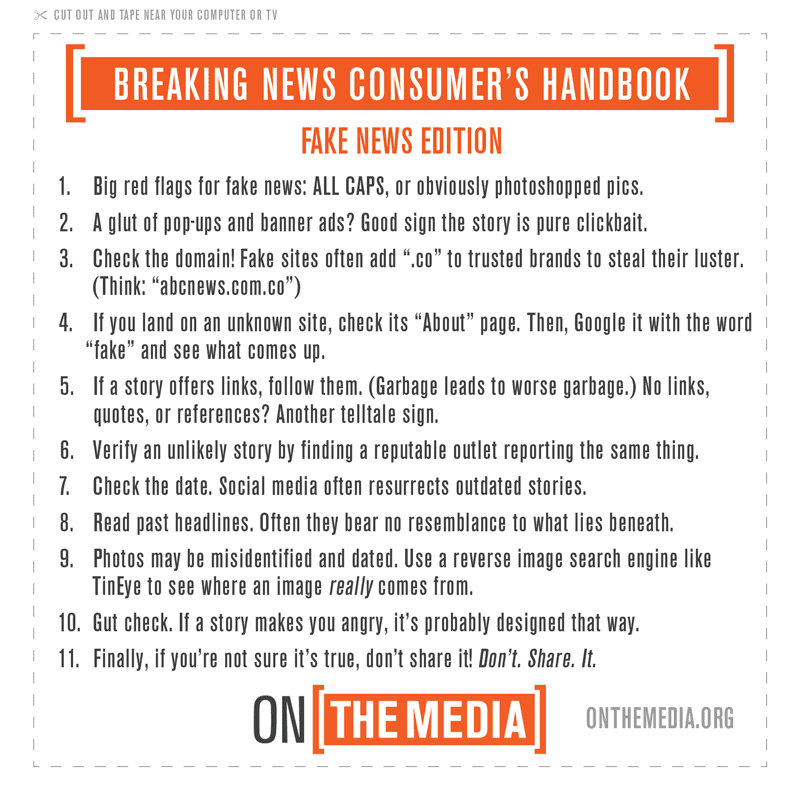
Glossary: The Language of News Literacy (Stony Brook University)
FAIR's Media Activism Toolkit (Fairness & Accuracy in Reporting): "How-to" guides on identifying and challenging misleading or unfair news coverage
Tips on How to Spot Fake News (FactCheck.org):
Six Questions that Will Tell You Which Media to Trust (American Press Institute)
Key Concepts for Media Literacy (Media Smarts):
Allsides: Compares news coverage from left, right, and center sources
Truth, Truthiness, Triangulation: A News Literacy Toolkit for a Post-Truth World (School Library Journal)
Web Literacy for Student Fact-Checkers (Mike Caulfield, 2017): Free and excellent online book with strategies for evaluating and fact-checking online sources
Blue Feed, Red Feed: See the Liberal Facebook and Conservative Facebook, Side by Side (Wall Street Journal)
Let's Check a Claim (Indiana University East)
Check Your Own Claim (Indiana University East)
Break the Election with Mediabreaker (The LAMP): Activity in which students deconstruct political ads. Includes resources for fact checking and a brief history of political advertising.
Skills and Strategies: Fake News vs. Real News (The Learning Network, NY Times): Activities and resources for teaching media literacy
From Gutenberg to Zuckerberg in 14 Lessons (Fall 2016 updated version) (Digital Resource Center, Stony Brook University): Materials from a News Literacy course. Individual lessons can stand alone or be used together.
Digital Polarization Initiative (of AASCU's American Democracy Project): A wiki for college students and teachers to research and fact-check claims found online. Includes teaching resources related to issues of "digital polarization."
Guidelines for Discussing Difficult or Controversial Topics (University of Michigan)
Examples of Discussion Guidelines (University of Michigan)
Difficult Dialogues in Higher Education: Resources for teaching about controversial issues; includes the Difficult Dialogues Handbooks
The radio show On the Media has created a number of "Breaking News Consumer's Handbooks" to help people evaluate whether or not information they encounter on the news and social media is credible. There are often confusing, competing accounts when a news story breaks. These handbooks are a reminder to be critical and thoughtful about what information is presented about a news story, how it is presented, and who might benefit from presenting information in a certain way.
Review the links below for more information about these handbooks, and to get a higher quality image for printing.
"The Breaking News Consumer's Handbook: Fake News Edition" (On the Media, November 16, 2016)
